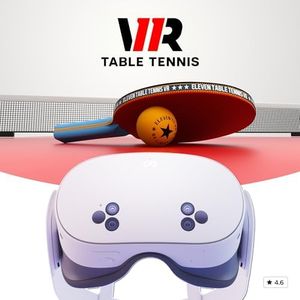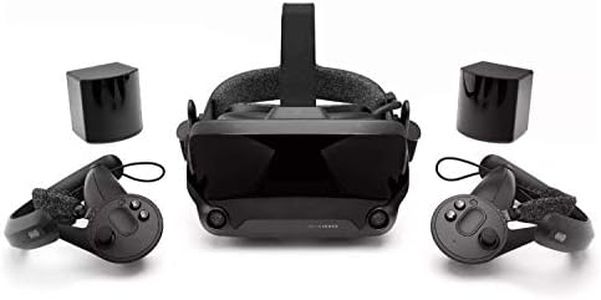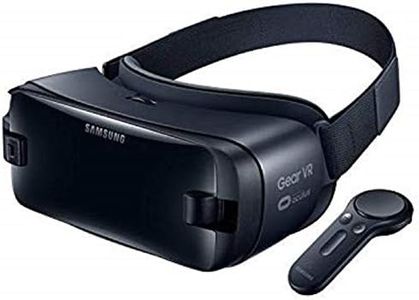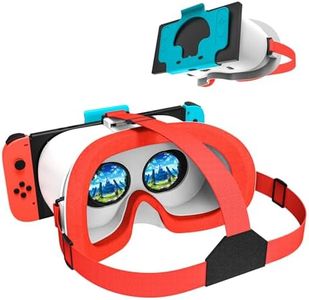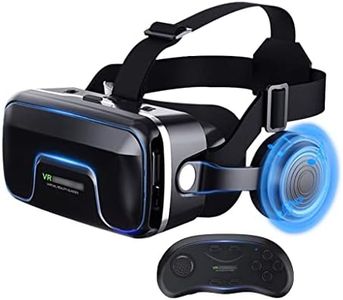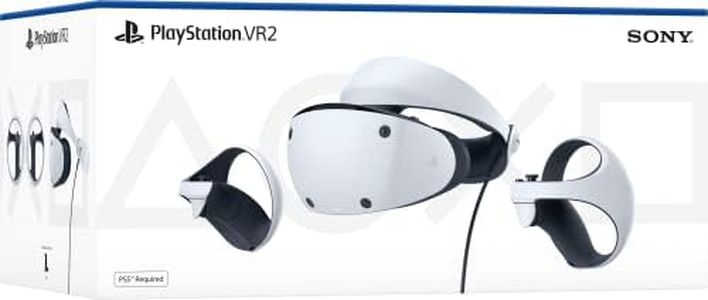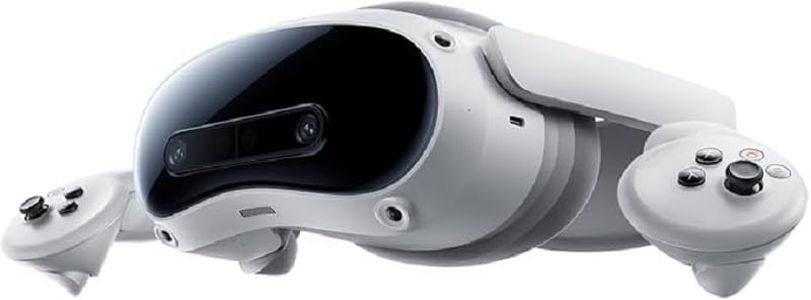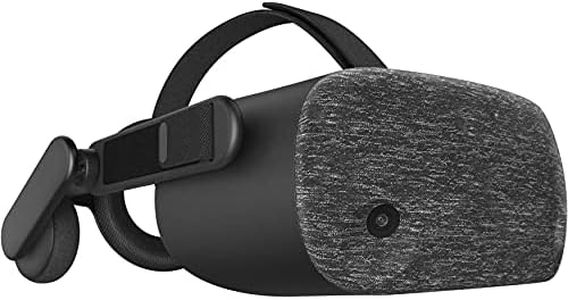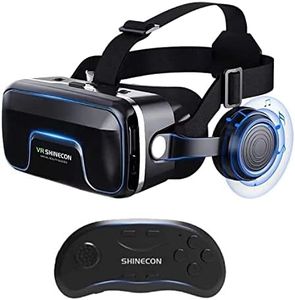We Use CookiesWe use cookies to enhance the security, performance,
functionality and for analytical and promotional activities. By continuing to browse this site you
are agreeing to our privacy policy
10 Best Virtual Reality Headsets
From leading brands and best sellers available on the web.By clicking on a link to a third party's website, log data is shared with that third party.
Buying Guide for the Best Virtual Reality Headsets
When choosing a virtual reality headset, it's important to look beyond big brand names and flashy marketing. Your goal should be to find a headset that matches your needs, whether it's for gaming, watching movies, social experiences, or creative projects. Begin by thinking about where you’ll use your headset—at home, at work, or while traveling. Take into account the kinds of experiences you want and what devices (like a PC, console, or phone) you already own. Comfort, image quality, and ease of setup are crucial—so consider how each headset fits your lifestyle and space.Display ResolutionDisplay resolution refers to how many pixels are shown in each eye’s screen of the headset. Higher resolution means clearer, sharper images and less chance of seeing 'screen door' effects—the visible lines between pixels. Lower resolutions (such as 1080 x 1200 per eye) are generally found in entry-level devices and are suitable for less detailed games or social VR, but may look fuzzy for realistic simulations or movies. Mid-range resolutions (like 1440 x 1600 per eye) offer a good balance of clarity and performance, which is awesome for most users. High-end resolutions (such as 2160 x 2160 per eye or higher) provide incredible clarity ideal for professionals or those who demand the best visuals, but often need powerful computers to run smoothly. Choose a resolution that matches how much sharpness and detail matter in your VR use and the power of your connected device.
Field of View (FOV)Field of view describes how much of the virtual world you can see at once, measured in degrees. A lower FOV (around 90 to 100 degrees) means a more tunnel-like view, which can feel less immersive but can still be great for casual users and quick play sessions. Standard FOVs (100–110 degrees) allow most users to feel comfortably surrounded by VR experiences, making them suitable for games, education, and movies. Larger FOVs (110–130 degrees or more) really amp up immersion for enthusiasts or simulation fans but often come at a higher price or require more complex hardware. Consider whether you prefer to be fully surrounded by virtual worlds or if a more limited viewpoint is okay for your needs.
Tracking TechnologyTracking technology is about how the headset and controllers sense your movements. Outside-in tracking involves separate sensors placed in your room, which can be more precise but needs a dedicated play area. Inside-out tracking uses cameras on the headset itself, making setup simpler and more portable, though sometimes tracking can struggle in low-light or cluttered spaces. Some headsets use no tracking and limit movements to simpler interactions—these are best for basic experiences. Choose tracking based on your space at home, how much movement you want in VR, and your willingness to set up extra accessories.
Refresh RateRefresh rate tells you how many times the display updates the image per second, measured in hertz (Hz). Low rates (60–72 Hz) are okay for casual use or video playback, but may cause some motion blur or discomfort during fast action. Standard VR headsets usually offer 90 Hz, which feels smooth for most users and reduces motion sickness in games. Premium headsets may offer 120 Hz or higher, great for quick action or longer sessions. If you know you’re sensitive to motion or prone to nausea, choosing a headset with a higher refresh rate can make a noticeable difference.
Platform CompatibilityPlatform compatibility means which devices or systems the headset works with—like PCs, gaming consoles, or as a standalone device. Some VR headsets require powerful computers, some are made for particular consoles, and some work with smartphones or completely on their own (standalone). If you want maximum portability or don’t want to connect to extra hardware, standalone is best. For the most advanced and diverse experiences, PCVR headsets are the way to go, but they need a strong computer. Think about what devices you already have and where you plan to use VR before you choose.
Comfort and ErgonomicsComfort and ergonomics refer to how the headset feels on your head during use. Heavier or poorly balanced headsets can be uncomfortable in longer sessions, while lighter, adjustable models let you enjoy VR for longer periods. Adjustable straps, face padding, and weight distribution can make a huge difference. If you plan on marathon sessions or sharing the headset with others, look for models that let you tweak fit, have replaceable padding, or easily accommodate glasses.
Controller DesignController design speaks to how you interact in VR. Simple remote-style controllers might be fine for video or browsing, while highly tracked ergonomic controllers allow full hands-on interaction and precise gestures in games and creative apps. Some high-end systems even use hand-tracking, letting you ditch controllers entirely for some apps. Choose your controller based on how interactive your VR choice is—gamers and creators need responsive, tracked controllers, while casual or media-focused users can get away with simpler designs.
